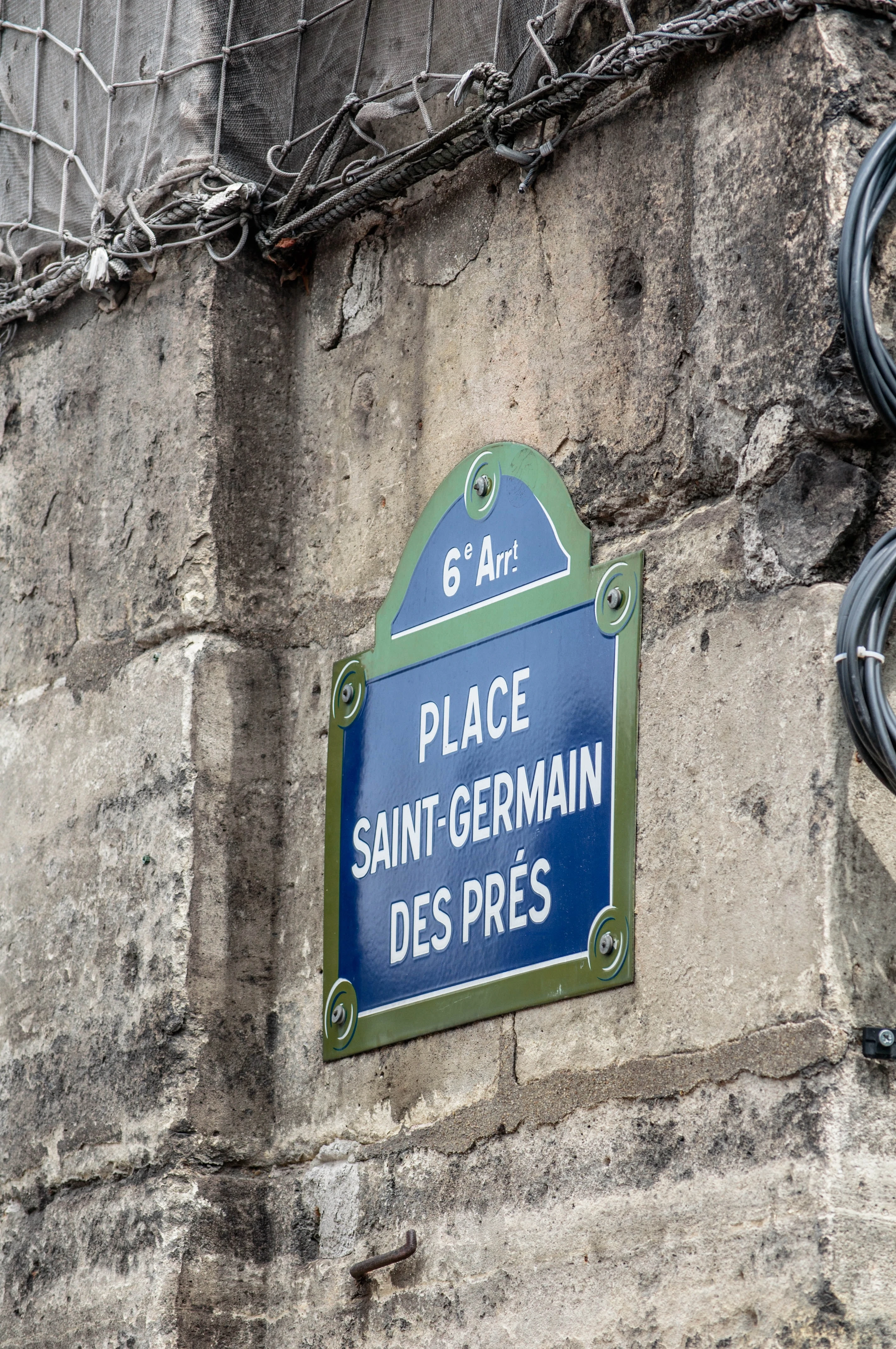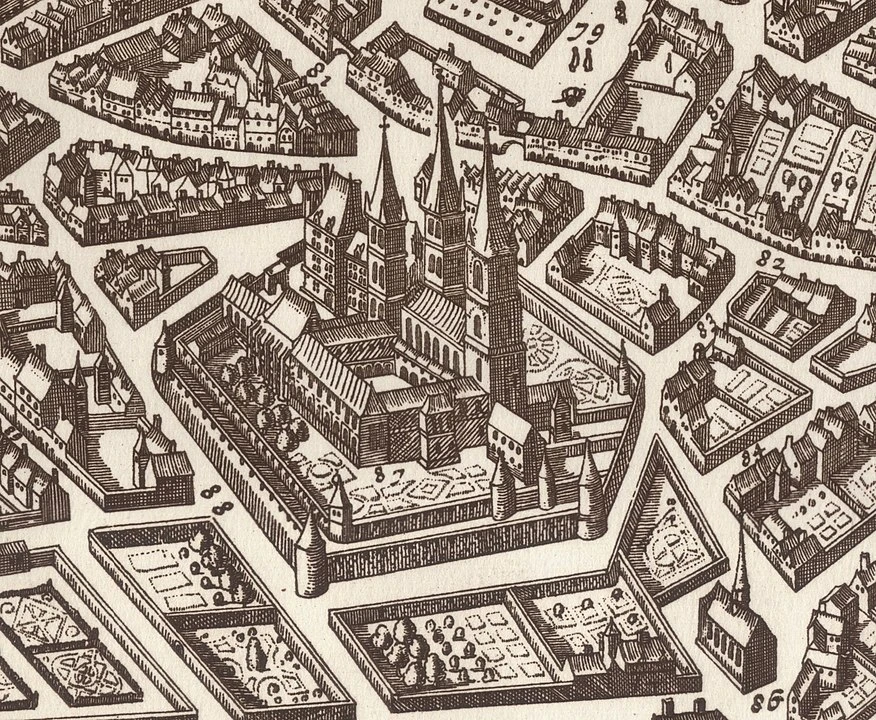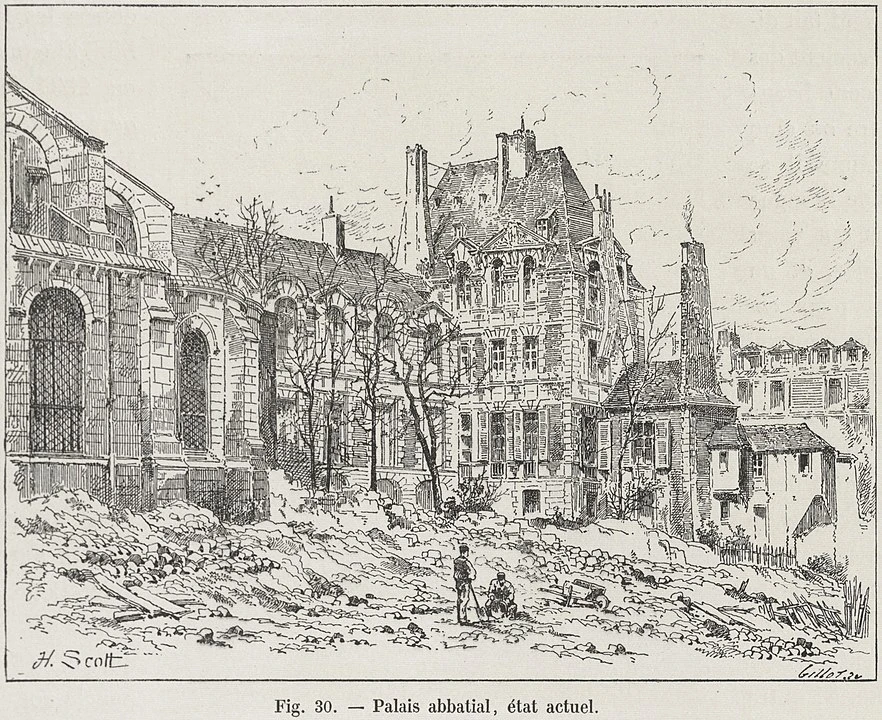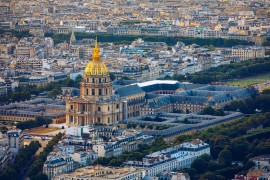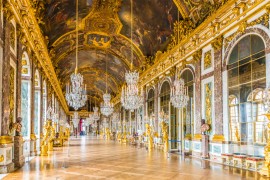A whole neighborhood, a whole history
Saint Germain des prés / Photo by Sophie Louisnard on Unsplash
A huge abbey
We understand the astonishment of some tourists who come out of the metro in Saint-Germain des prés and who, considering the name of the place, are surprised not to find... De prés. Besides, considering the prices, one is tempted to speak about "Saint-Germain des prêts". In short, not a daisy, oh yes, here is one! However, centuries ago, we were here in the middle of the countryside. At the gates of Paris, of course, but outside the walls. In fact, it was Germain d'Autun, bishop of Paris, who started the district by founding an abbey here in the 6th century. This abbey, in which the relics of Saint Germain could be venerated, grew so much that it became one of the most important in the kingdom, and was cherished by the kings of France. And around the abbey, a village developed, which for a long time was a sort of village near Paris. A fair was held there, the forerunner of our supermarket when you think about it, since almost everything that was possible at the time could be found there.
Saint Germain des prés in 1618
In the Middle Ages, it is included. Paris is greedy. The abbey of Saint-Germain is enormous. Its three bell towers watch over immense buildings. Gardens complete the ensemble and are used by the monks to meditate or to care for themselves, since, as in all abbeys, the tradition of hospitality and care is cultivated. The French Revolution blew so hard on Paris that the Saint-Germain abbey did not recover. Closed in 1792 when the monasteries were dissolved, sold as national property, transformed into a saltpetre factory for the church, it was a ruined building that entered the 19th century out of breath. There are still some beautiful ruins and the church of Saint-Germain remains, anchored thanks to its thousand-year-old foundations.
The dilapidated abbey palace in 1860
The intellectual Paris finds its tables there
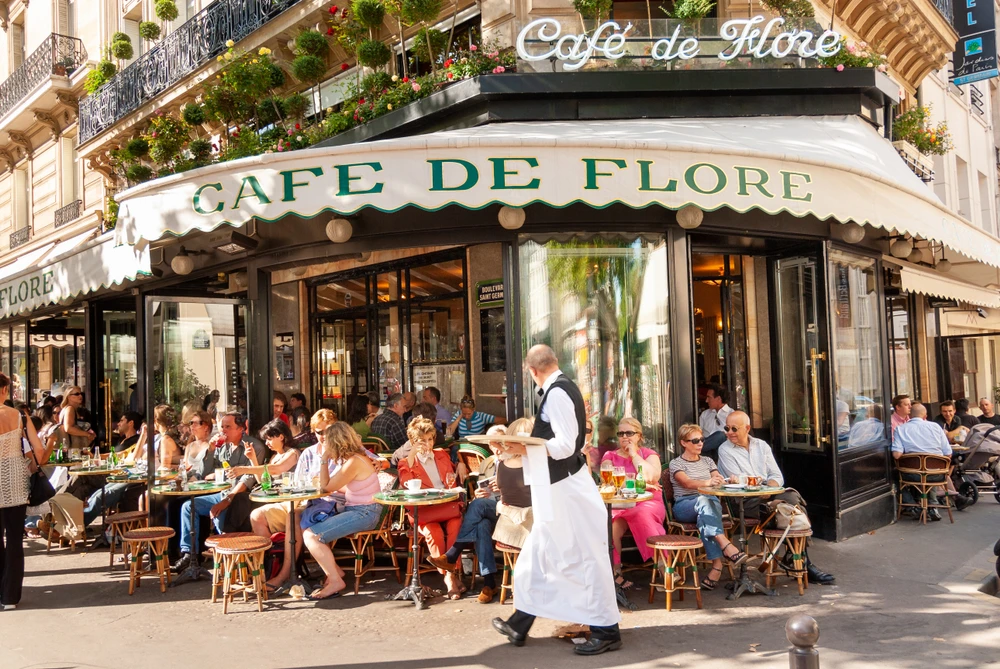 Le café de Flore à Saint Germain des prés Photo par Alex Segre/Shutterstock
Le café de Flore à Saint Germain des prés Photo par Alex Segre/Shutterstock
During the Revolution, Danton and Marat lived in the Saint Germain district. In the 20th century, it became the intellectual center of Paris. Here, Marguerite Duras drinks her coffee. You can see Truffaut, Jean-Luc Godard, or Jacques Prévert, and you can whistle the beautiful songs of the muse of Saint-Germain, the divine Juliette Gréco. In short, it is the district of the lovers of words.
So, nothing surprising, if I may say so, in the fact that one of the greatest writers in the history of Great Britain died here, in the rue des beaux-arts, on November 30, 1900. His name was Oscar Wilde. One can place his steps in those of the writers by posing a moment on the terrace of the "Café de Flore" at 172 boulevard Saint-Germain or of "Les Deux Magots" at 6 place Saint-Germain.
Oscar Wilde / Died in 1900 in Saint Germain des prés (1882 by Napoleon Sarony).
Address and subway :
Boulevard de Saint-Germain des prés 75 006 Paris / Metro line 4 station Saint-Germain des prés.
Around Saint-Germain des prés
The Institute of France and the French Academy
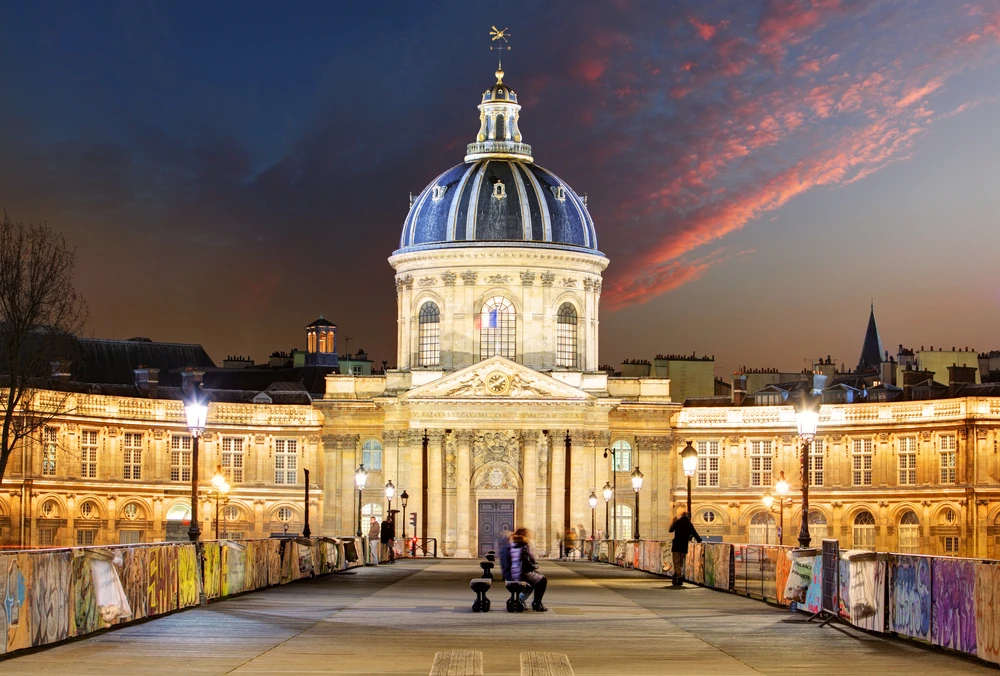 L'institut de France Photo par TTstudio/Shutterstock
L'institut de France Photo par TTstudio/Shutterstock
The Institute of France is not far away at 23 quai Conti. It is the place that gathers 5 very prestigious academies, notably the French Academy that sits "under the dome" since 1635 and its foundation by the cardinal of Richelieu. Just in front of it there is the bridge of arts, very romantic and, around the bridge, even above, you can meet night owls and some painters.
Addresses and metro :
23 quai conti and Pont des arts 75 006 Paris / Metro : Mabillon or Pont des arts stations (less than 3 mn walking distance).
Place Henri Mondor
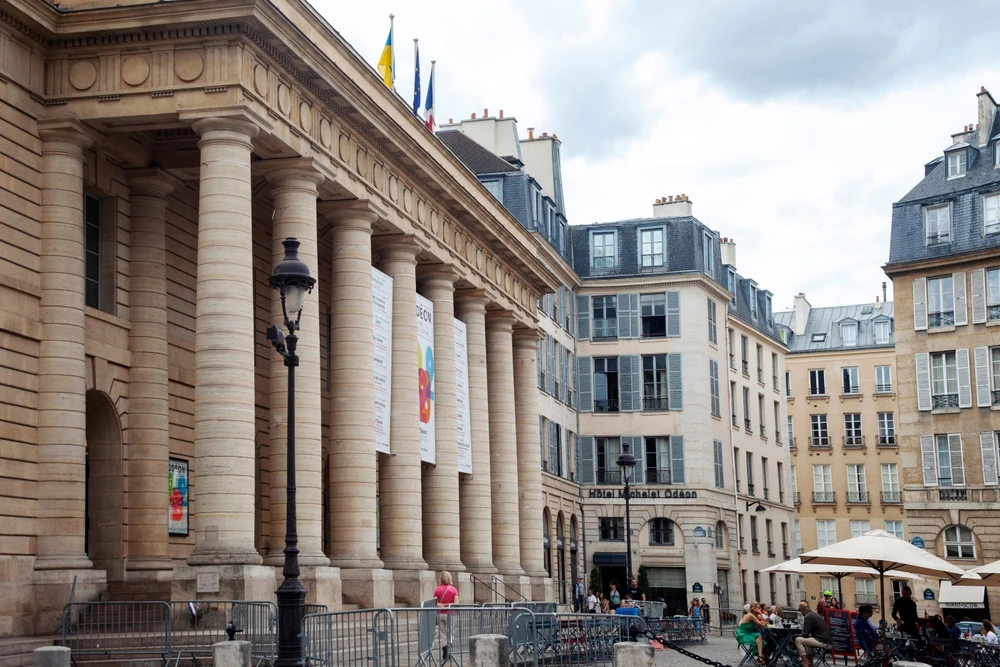 Théâtre de l'Odéon Photo par OKcamera/Shutterstock
Théâtre de l'Odéon Photo par OKcamera/Shutterstock
This is where the Café Procope is located, the oldest café in Paris, founded by an Italian named "Procopio". It served coffee, chocolate, and was the meeting place for many Enlightenment minds. It was here that the Phrygian cap was proposed as a symbol of the Republic. Further on, there is the statue of Danton, the great revolutionary, the man who, faced with the defeat of the armies of the French Revolution said "Boldness, again and again boldness and France is saved". You can admire his statue full of movement.
Not far away is the superb Odéon theater. It is there that Beaumarchais gave the premiere of "Le Mariage de Figaro" in 1784 whose words announced to the aristocracy the troubles to come through these words "you have only given yourselves the trouble to be born". A magnificent Italian-style theater behind the classical facade that remembers very well the "events" of May 1968.
Addresses and metro :
Place Henri Mondor 75 006 Paris. Metro lines 4 and 10 station Odéon.
Zoom on the Monnaie de Paris
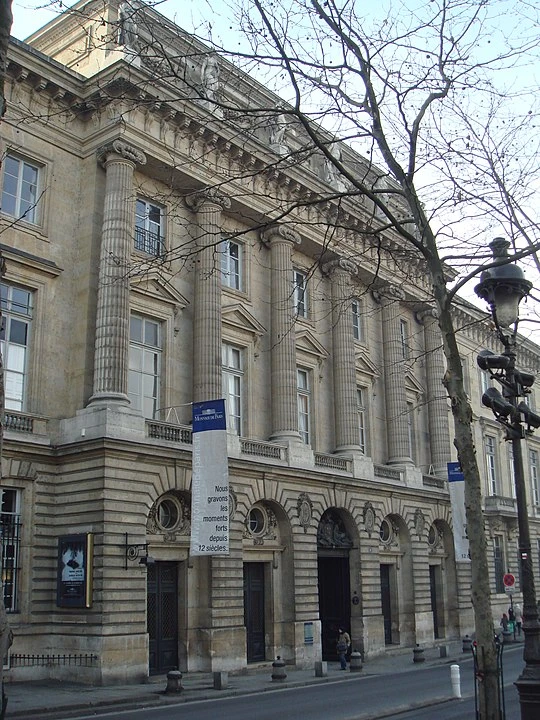
The facade of the Monnaie de Paris / By PHGCOM - Personal work, CC BY-SA 3.0, https://commons.wikimedia.org/w/index.php?curid=5691175
The oldest company in France.
The facade is majestic as it should be at what is considered the oldest company in the world in activity. La Monnaie de Paris. It is in any case the oldest French institution since it was wanted by King Charles the Bald in the year 864. It must be said that the currency is almost as old as the states. It is the Greeks who invented the currency in the year 670 before Jesus-Christ. Before, we used to barter to pay our purchases and we paid our taxes in kind. Not always practical. Of course, the State quickly took over the currency and reserved the right to manufacture it. Beware of those who cheat by making fake coins. Until the French Revolution, counterfeiters were condemned to be boiled alive. Only one of them will get out of it, missed by the executioner. His name was Louis Secrétin (in french : secrétin mean this idiot).
Coinage: the privilege of the state
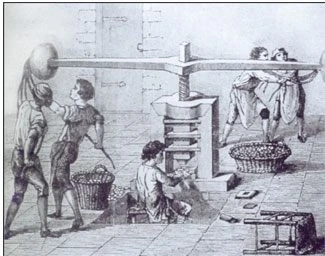
Currency struck with a pendulum
The State wants to be the only one to be able to coin money. Even if it means using it for its own interests. Philip the Fair, king of France in the Middle Ages, earned a reputation as a counterfeiter by lightening the metal of coins to replenish his coffers. For a long time, the king was not the only one to issue money. The great lords also did so. The right to coin money was one of the greatest privileges. The fight of the kings of France will be to make disappear these local currencies as much as to enlarge their kingdom. These coins, whose value and number were decided by the State, were therefore manufactured by the Monnaie de Paris. In 1775, it was installed in a hotel that served as a manufacturing workshop.
It manufactured the first French postage stamp.
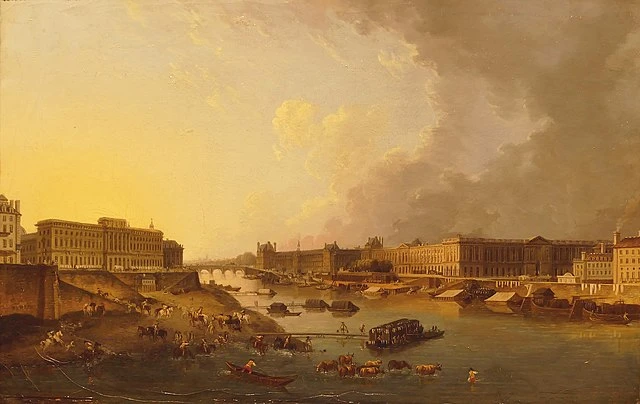
Pierre-Antoine Demachy, oil on canvas, 1783. View of the Seine downstream from the Pont-Neuf on the left the Hôtel de la Monnaie 8 years after its construction in 1775 (Musée de la Monnaie de Paris).
A huge building for the time with its 112 meters length and its 12 000 square meters. It was here that money was made even after the Revolution. The first banknotes were created there and the first postage stamp of french history was issued on January 1st 1849. Today, the magnificent Hôtel de la Monnaie de Paris is no longer the place where the money that enabled us to make our holiday purchases was made. But the tradition of manufacturing, and even sublimation of coins continues through medals and unpublished coins that are still manufactured there. The Paris mint, in multiple locations, continues to produce over a billion coins each year.
Address and metro
11 quai conti
Metro Pont Neuf (line 7) / Odéon (lines 4 and 10) / Saint-Michel (line 4)
RER: Châtelet (RER A and B) / Saint-Michel Notre-Dame (RER B and C)
Opening hours
Every day 11am to 6pm except Mondays and except December 25 / January 1 and May 1
Do you like Paris? Discover all our Parisian destinations here!

